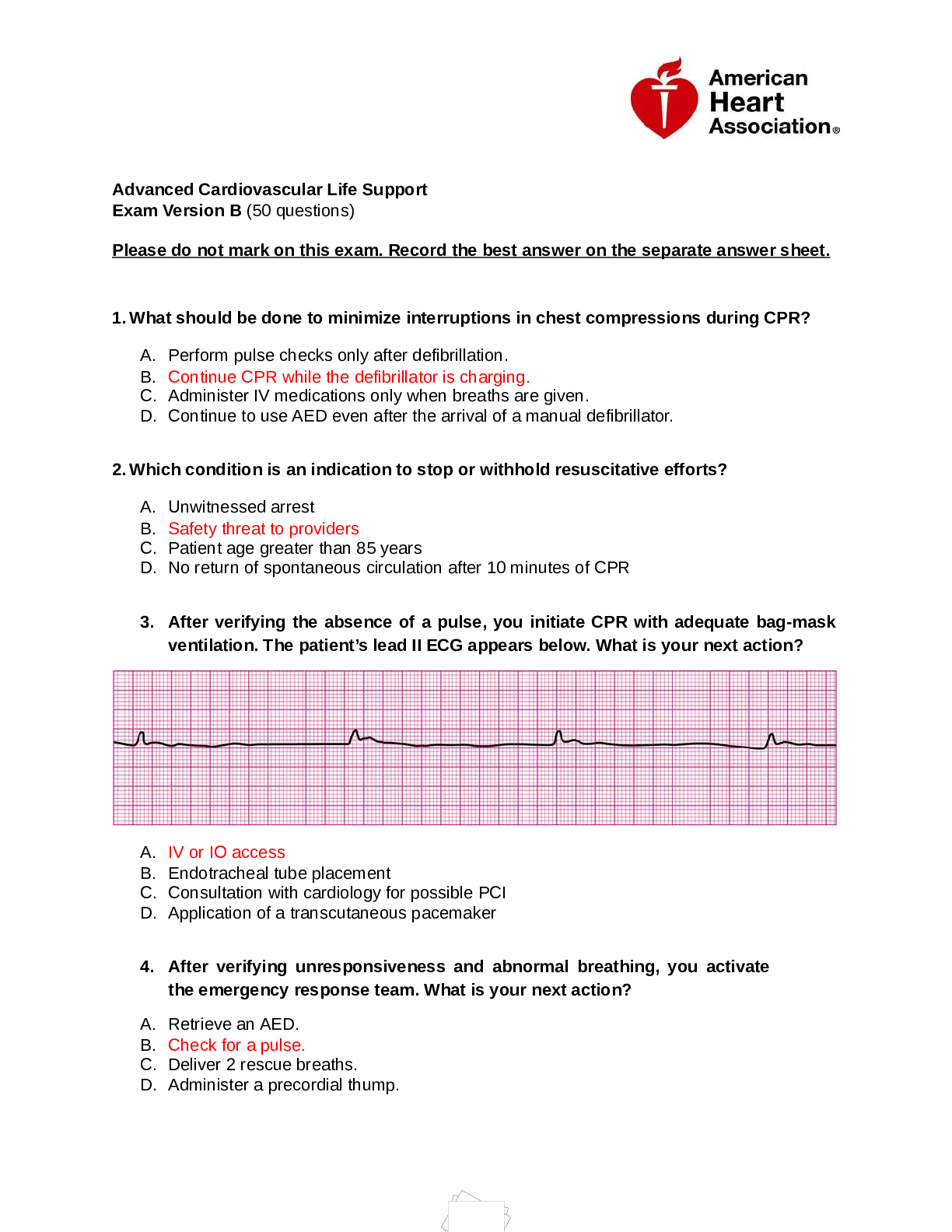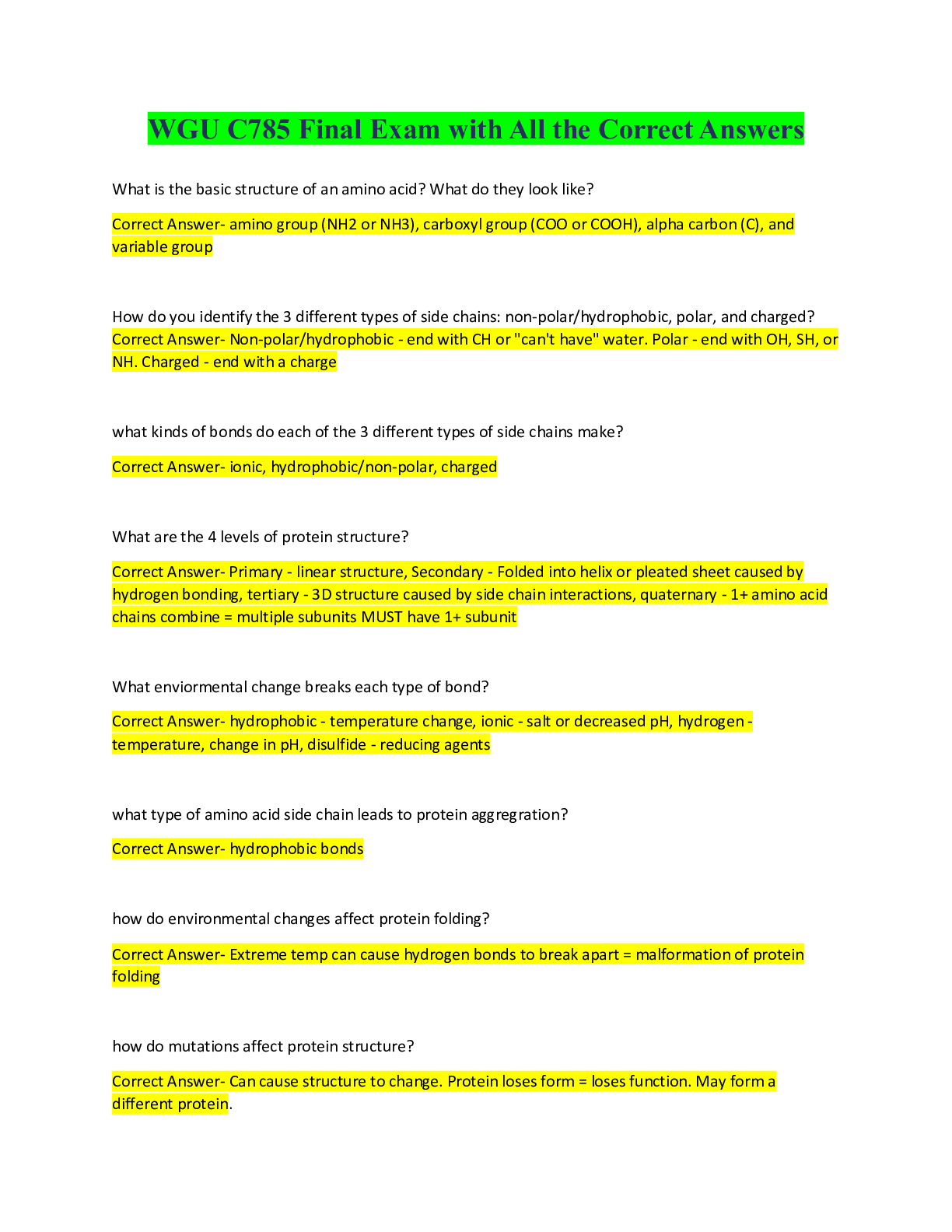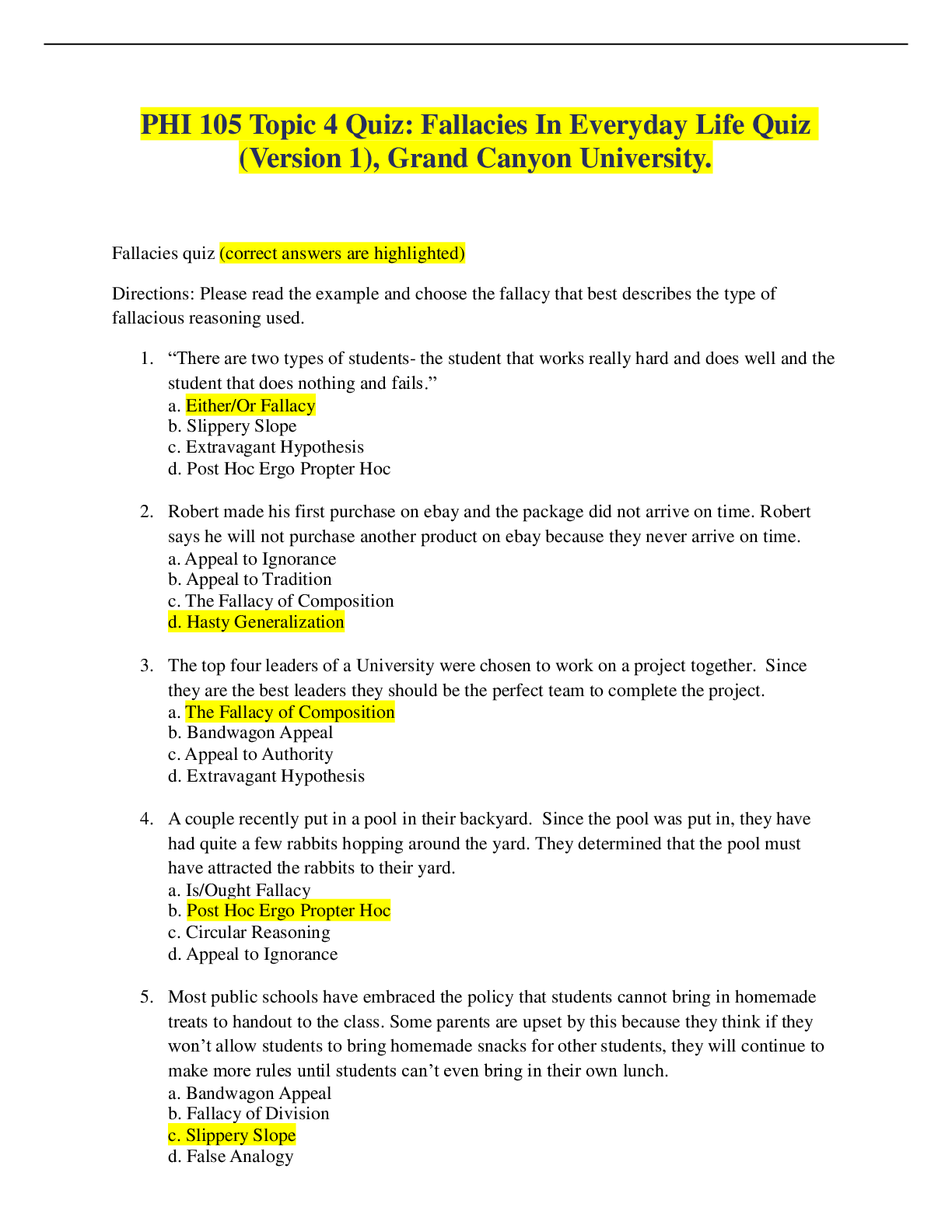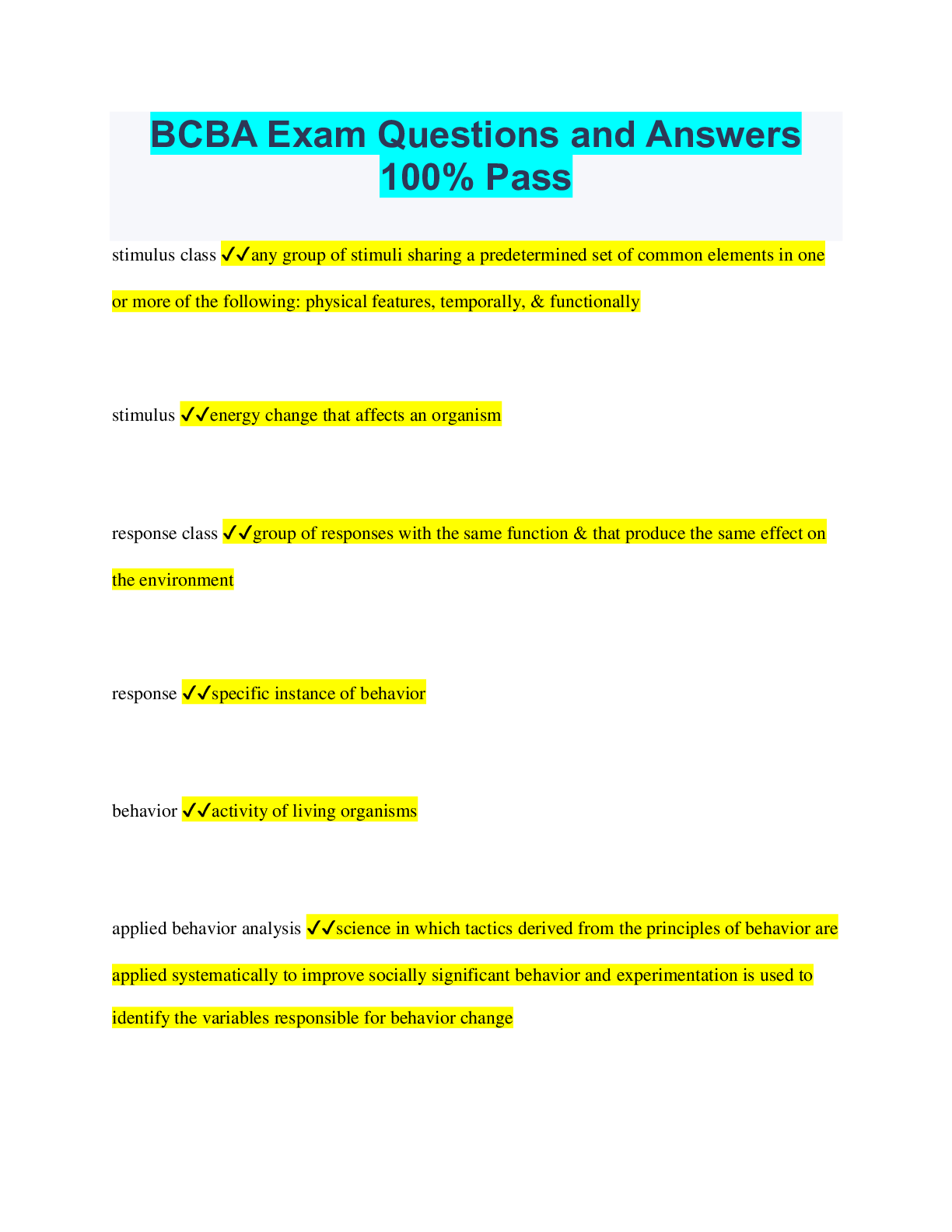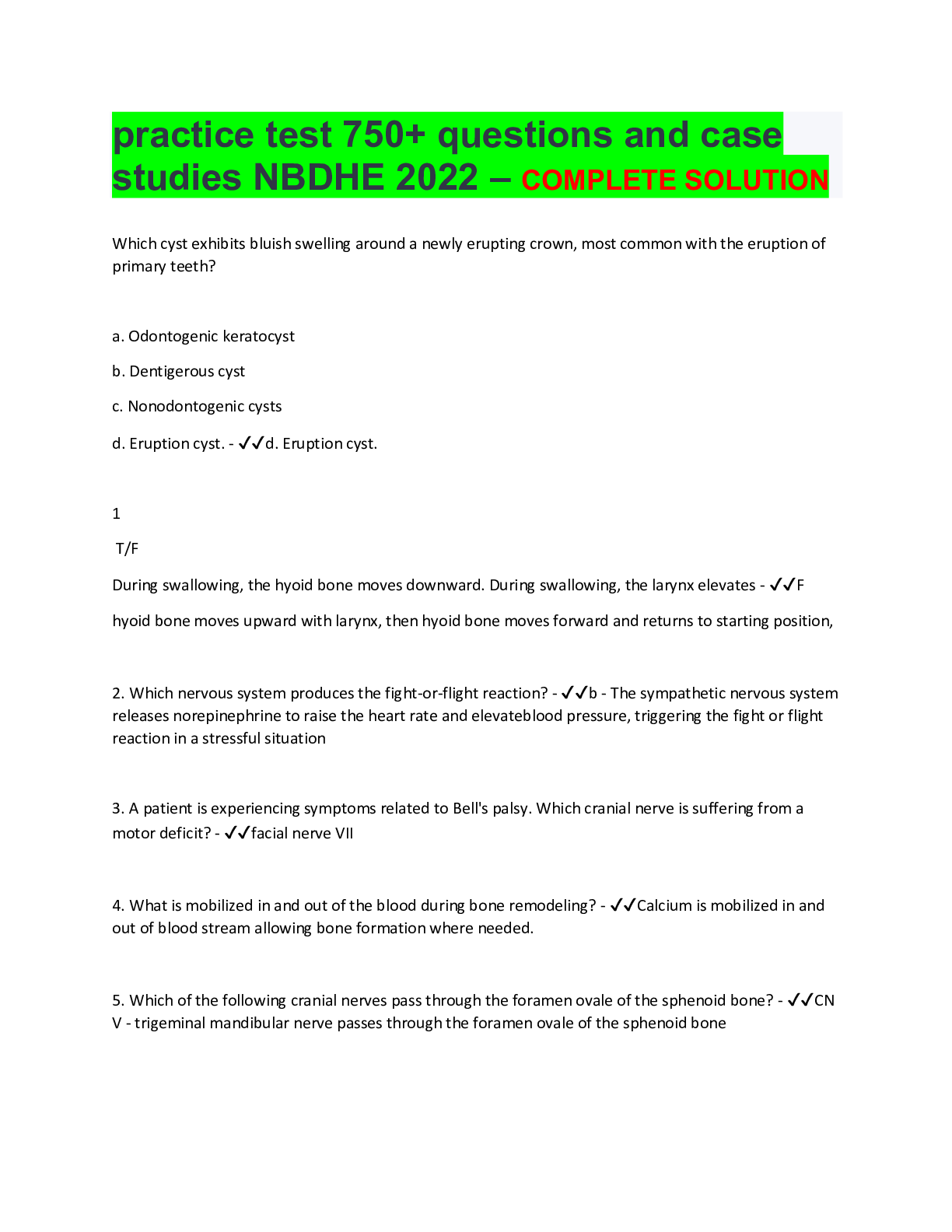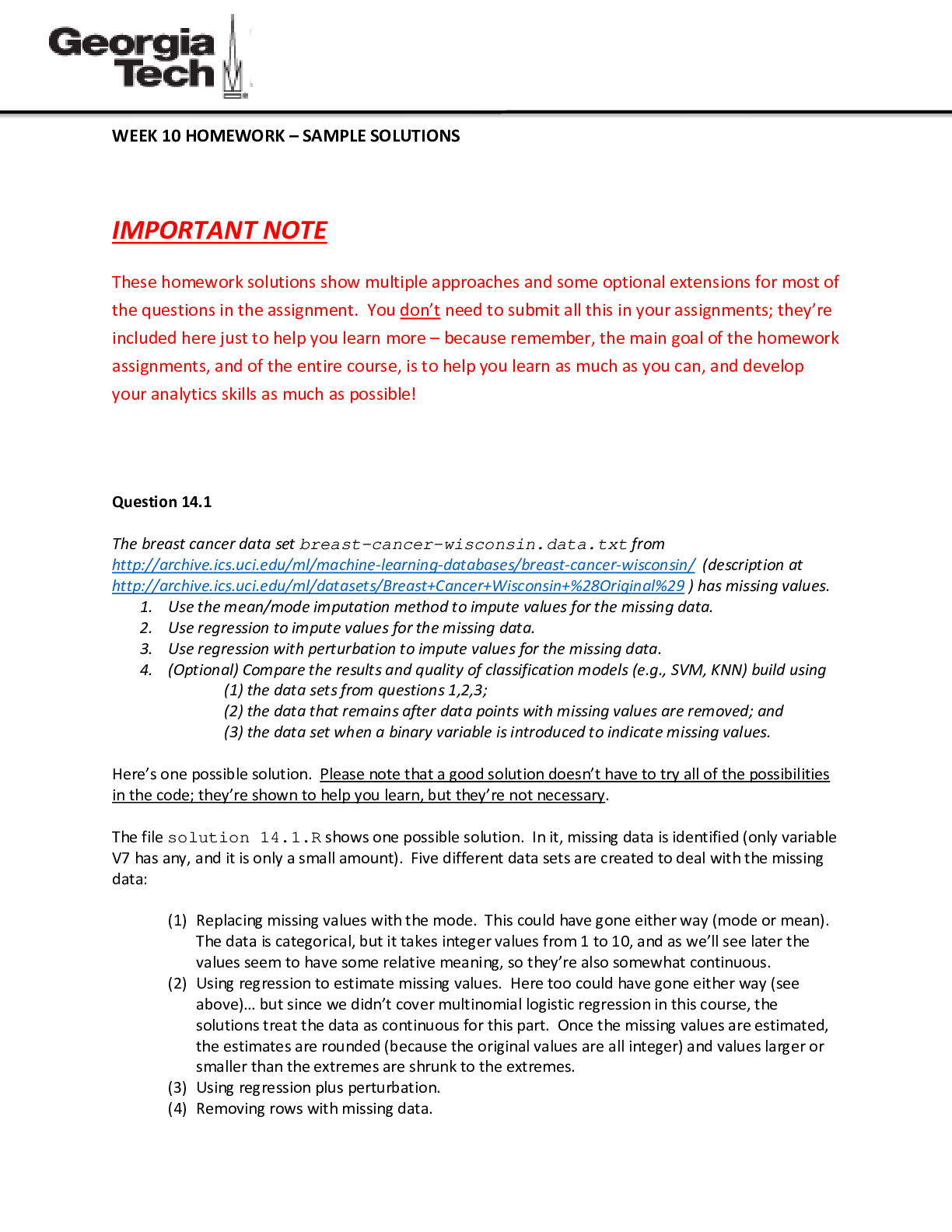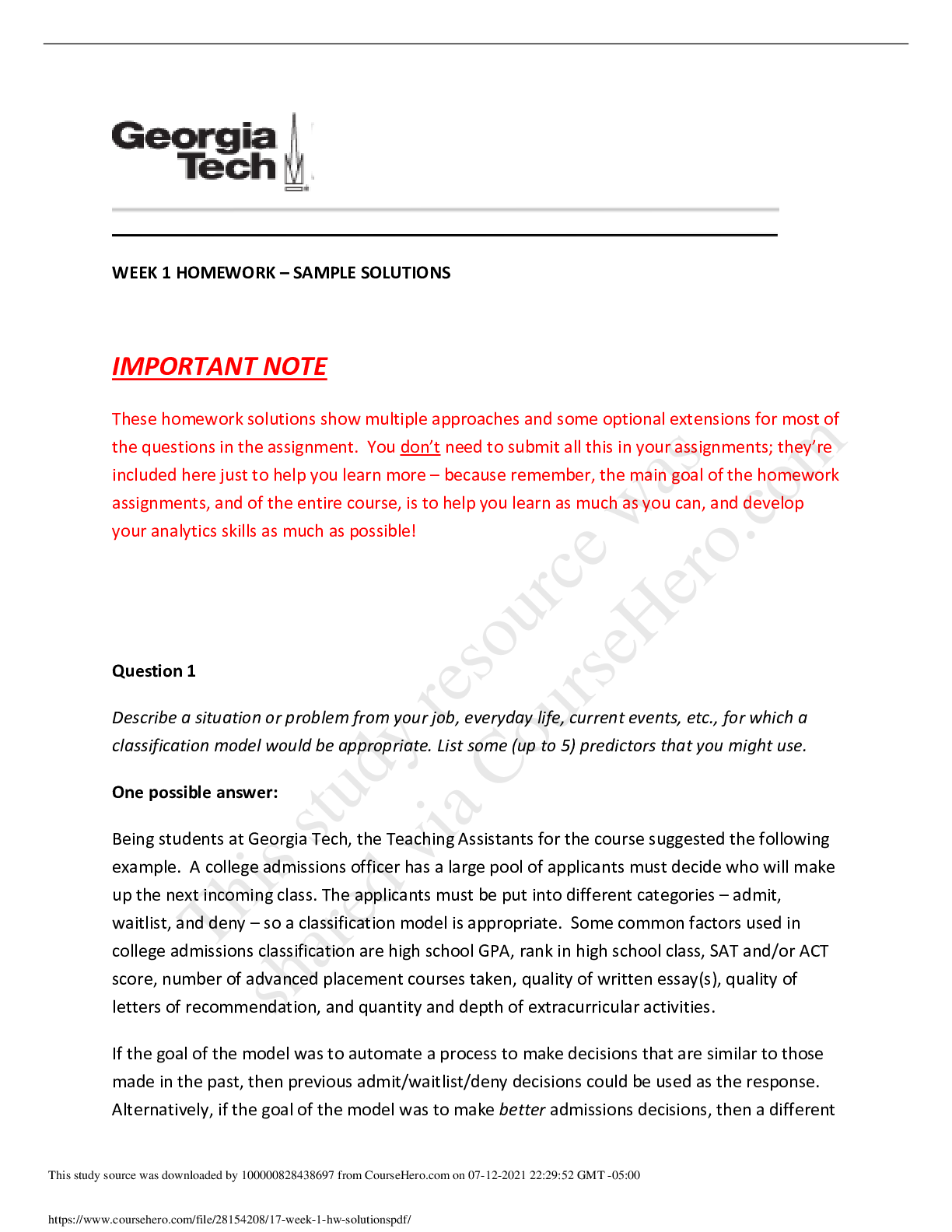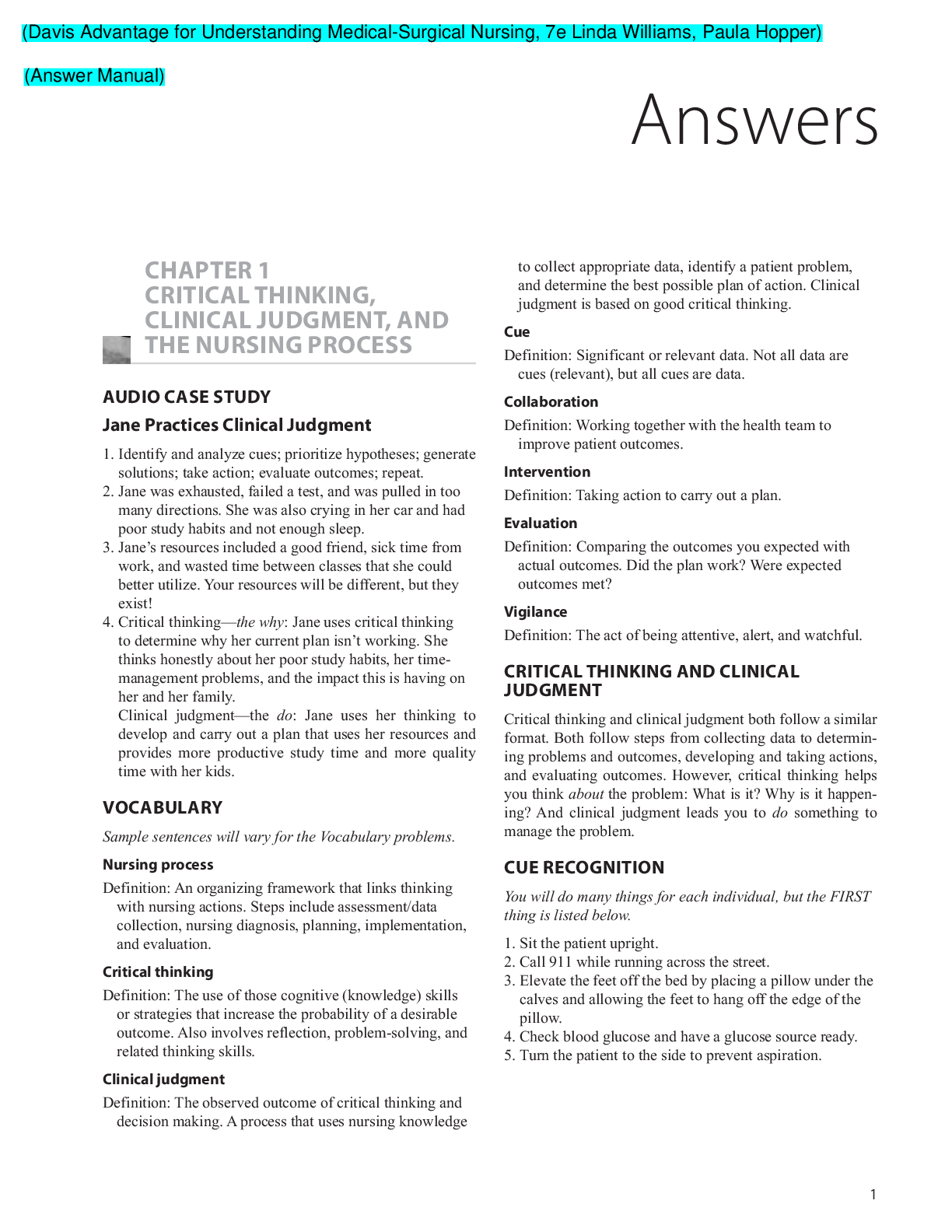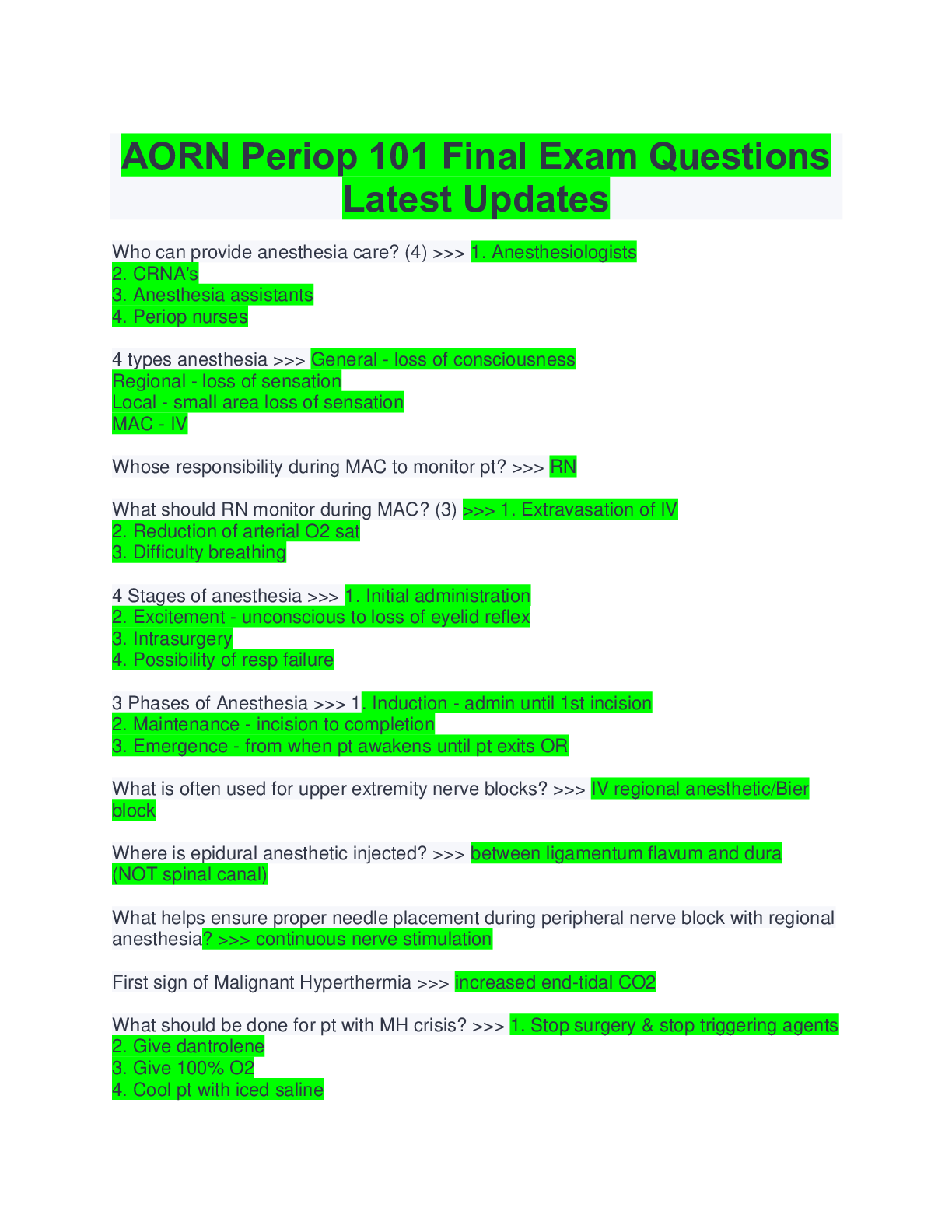Engineering > QUESTIONS & ANSWERS > WEEK 2 HOMEWORK – SAMPLE SOLUTIONS (All)
WEEK 2 HOMEWORK – SAMPLE SOLUTIONS
Document Content and Description Below
WEEK 2 HOMEWORK – SAMPLE SOLUTIONS IMPORTANT NOTE These homework solutions show multiple approaches and some optional extensions for most of the questions in the assignment. You don’t need to... submit all this in your assignments; they’re included here just to help you learn more – because remember, the main goal of the homework assignments, and of the entire course, is to help you learn as much as you can, and develop your analytics skills as much as possible! Question 1 Using the same data set as Homework 1 Question 2 use the ksvm or kknn function to find a good classifier: (a) using cross-validation for the k-nearest-neighbors model; and (b) splitting the data into training, validation, and test data sets. SOLUTIONS: (a) There are different ways to do this. Three different methods are shown in HW2-Q1-a-fall.R. Just having one method is fine for your homework solutions. All three are shown below, for learning purposes. Another optional component shown below is using cross-validation for ksvm; this too did not need to be included in your solutions. METHOD 1 The simplest approach, using kknn’s built-in cross-validation, is fine as a solution. train.kknn uses leave-one-out cross-validation, which sounds like a different type of cross-validation that I didn’t mention in the videos – but if you watched the videos, you know it implicitly already! For each data point, it fits a model to all the other data points, and uses the remaining data point as a test – in other words, if n is the number of data points, then leave-one-out cross-validation is the same as n-fold cross-validation. Using this approach here are the results (using scaled data): k Correct Percent correct k Correct Percent correct 1,2,3,4 533 81.50% 18 557 85.17% 5 557 85.17% 19-20 556 85.02% 6 553 84.56% 21 555 84.86% 7 554 84.71% 22 554 84.71% 8 555 84.86% 23 552 84.40% 9 554 84.71% 24-25 553 84.56% 10-11 557 85.17% 26 552 84.40% 12 558 85.32% 27 550 84.10% 13-14 557 85.17% 28 548 83.79% 15-17 558 85.32% 29 549 83.94% 30 550 84.10% As before k < 5 is clearly worse than the rest, and value of k between 10 and 18 seem to do best. For unscaled data, the results are significantly worse (not shown here, but generally between 66% and 71%). Note that technically, these runs just let us choose a model from among k=1 through k=30, but because there might be random effects in validation, to find an estimate of the model quality we’d have to run it on some test data that we didn’t use for training/cross-validation. METHOD 2 Some of you used the cv.kknn function in the kknn library. This approach is also shown in HW1- Q3-a.R. METHOD 3 And others of you found the “caret” package in R that has the capability to run k-fold crossvalidation (among other things). The built in functionality of the caret package gives ease of use but also the flexibility to tune different parameters and run different models. It’s worth trying. This approach is also shown in HW1-Q3-a.R. The main line of code is: knn_fit <- train(as.factor(V11)~V1+V2+V3+V4+V5+V6+V7+V8+V9+V10, data, method = "knn", # choose knn model trControl=trainControl( method="repeatedcv", # k-fold cross validation number=10, # number of folds (k in cross validation) repeats=5), # number of times to repeat k-fold cross validation preProcess = c("center", "scale"), # standardize the data tuneLength = kmax) # max number of neighbors (k in nearest neighbor) [Show More]
Last updated: 1 year ago
Preview 1 out of 7 pages

Reviews( 0 )
Document information
Connected school, study & course
About the document
Uploaded On
May 20, 2022
Number of pages
7
Written in
Additional information
This document has been written for:
Uploaded
May 20, 2022
Downloads
0
Views
92

.png)
.png)
.png)
.png)
.png)
.png)


